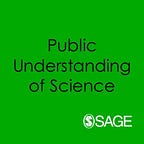The Environment — a history of the idea
Review by Elliot Honeybun-Arnolda
The book provides an important foundation in unearthing historical roots of the environment we discuss, contest and communicate today.
The Environment identifies William Vogt’s Road to Survival (1948) as the original source of a new narrative about an interconnected planet. Innovative in its use of the term, Vogt’s environment transforms from being a simple background to human affairs to something much more global and connecting in human consciousness.
In this intellectual history of the concept from three environmental historians, the last seven decades are seen as having brought a radical change in human understanding and making of the environment. The Environment seeks to illuminate and unpack the term and suggest where human cognisance may take us in the future.
Warde et al provide a comprehensive history that takes the reader back to Herbert Spencer in the 19th century and on to Paul Crutzen, credited with introducing the concept of the Anthropocene, passing through everything environment in between. We are informed how Vogt and Fairfield Osborn in the 1940s began to conceptualise the environment as global, interconnected and subject to human force.
We then move on to the 1960s and 1970s when the idea of the environment became institutionalised, emerging as the focus for multiple national and transnational agencies and beginning to be regularly discussed as a topic in academic conferences. We are taken on a journey through the development of concepts such as ecosystem, biosphere, biological diversity, and anthropogenic climate change that are now commonplace and have their own intellectual history, converging into the overall narrative and broad idea of the environment.
In the concluding chapter, Seeking a Safe Future, the authors unpack the Anthropocene, the idea that the human impact on Earth is geologically significant; they see its potential to drastically change how we view, engage or even live in our future world, much as the idea of the environment did previously. They recognise that multiple stories, like that of the environment, are crucial in the Anthropocene and that painting a generalised picture of human force does not capture the differences in environmental change between the global North and South as well as other differences they note. For any global idea to be judiciously unpacked, we must recognise and reveal the multiple actors, spaces and powers involved.
The authors do recognise these multiple ideas and actors, the historical contexts accompanying them and they unravel the complex history of the idea of the environment almost seamlessly. In doing so they highlight that the evolution of the environment is principally based on the emergence of new expertise. But they do not offer any deconstruction of ‘expertise’, what it means to be an expert, nor do they delve deeper into the methods by which the legitimacy or authority of this new expertise are secured.
They reject the idea of generalising human action in the Anthropocene as singular but accept expertise as something stable. Although this was not the central task nor is it traditionally a task of the historian, the need for a deeper understanding of the role of experts and for contextualising expertise and the role of political institutions, cultures and societies in producing, regulating, negotiating and legitimising expertise in the shaping of the environment as an idea became increasingly evident as the book progressed.
Overall, the science communication audience should find huge merit in this book, particularly those working in any aspect of environmental studies. The book provides an important foundation in unearthing historical roots of the environment we discuss, contest and communicate today. The authors note shortcomings in their work and how they primarily focus on western ideas of the environment but offer compelling final thoughts on the future role of the environment, considering the possibility of its replacement or transcendence as an idea of multiplicity, globality and interconnectivity by the idea of the Anthropocene.
Elliot Honeybun-Arnolda is a PhD student in the Science, Society and Sustainability (3S) research group at the University of East Anglia, England. His work focuses on the historical development of environmental science within the wider context of an evolving politics of environmental change. His latest publication is (with N. Obermeister) A Climate for Change: Millennials, Science and the Humanities, Environmental Communication, 13(1), 1–8
